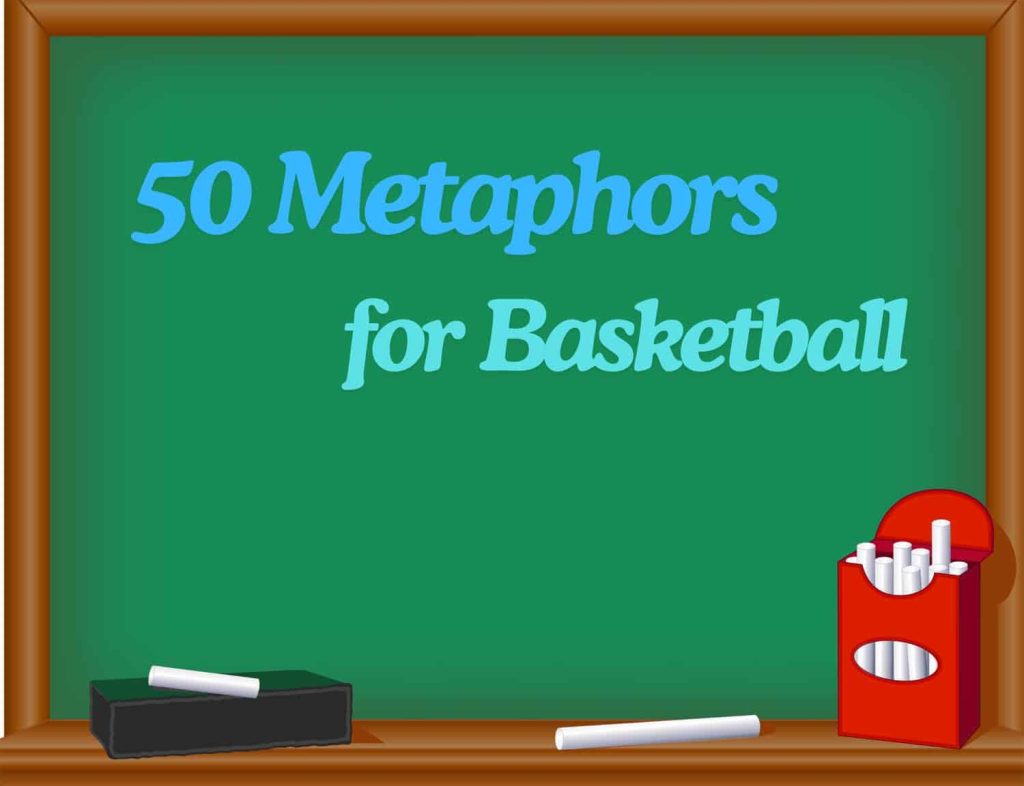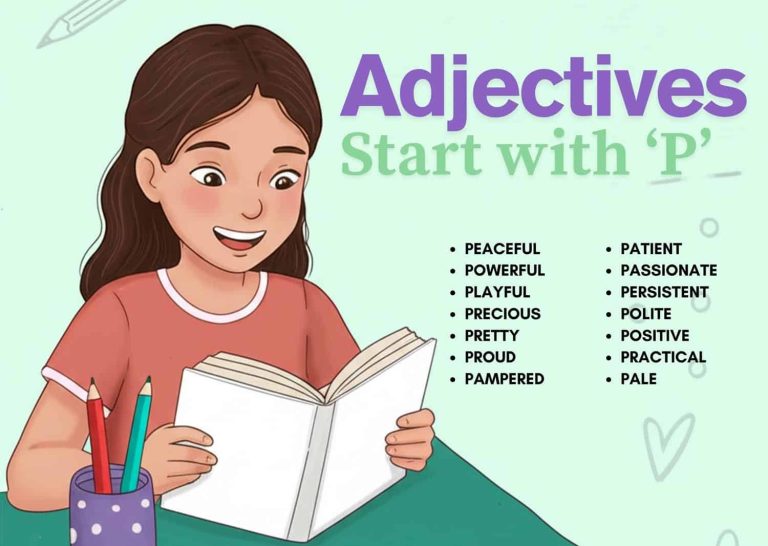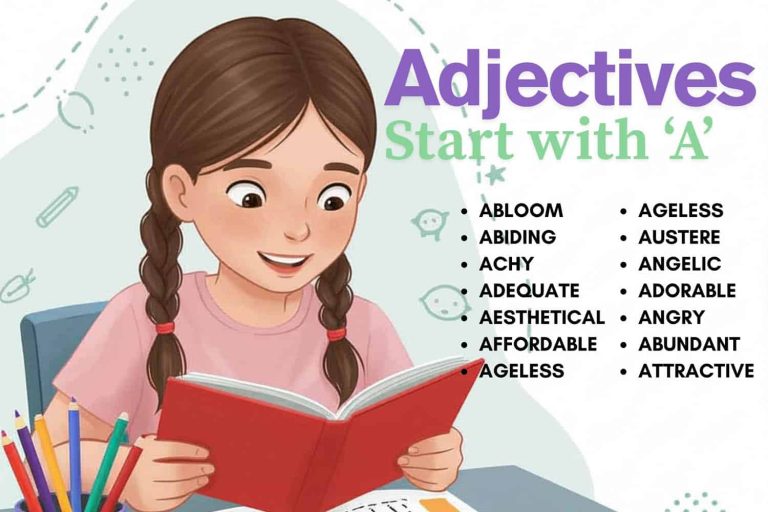50 Metaphors for Basketball: Dribbling with Language
Basketball, a sport of skill, strategy, and soaring athleticism, is a rich source of metaphors. These figures of speech allow us to describe the game in vivid and imaginative ways, going beyond literal descriptions to capture the essence of the competition.
Understanding metaphors for basketball enhances not only our appreciation of the sport but also our understanding of figurative language itself. This article explores the diverse world of basketball metaphors, providing definitions, examples, and exercises to help you master this exciting aspect of English grammar and sports vocabulary.
Whether you’re a seasoned sports enthusiast or a language learner, this guide will elevate your comprehension and communication skills. Learn how to use metaphors to describe the game and understand the deeper meanings behind the language used to describe the sport.
Definition of Metaphor for Basketball
A metaphor is a figure of speech that directly compares two unrelated things, asserting that one thing is another, without using “like” or “as” (which would make it a simile). The purpose of a metaphor is to create a vivid image or convey a deeper meaning by transferring qualities from one concept to another. Metaphors enrich language by allowing us to understand abstract ideas through concrete comparisons.
In the context of basketball, metaphors are used to describe players, teams, strategies, and even the game itself in non-literal terms. For example, calling a player a “scoring machine” is a metaphor because it implies that the player scores points with mechanical efficiency, even though he is not actually a machine. This usage goes beyond a simple description and adds a layer of meaning, highlighting the player’s scoring prowess.
Metaphors serve several functions. They can simplify complex ideas, making them more accessible and relatable. They can also add emotional depth and create a more engaging experience for the listener or reader. Furthermore, metaphors can provide new perspectives on familiar subjects, allowing us to see things in a different light.
In sports commentary, metaphors are crucial for making the game more exciting and easier for viewers to understand, especially those who are not deeply familiar with basketball jargon.

Breakdown of Basketball Metaphors
Basketball metaphors typically consist of two main elements: the tenor and the vehicle. The tenor is the subject being described (e.g., a player, a team, a strategy), while the vehicle is the object or concept used to describe the subject (e.g., a machine, a wall, a chess game). The connection between the tenor and the vehicle is the shared characteristic or quality that the metaphor highlights.
For example, in the metaphor “He’s a human highlight reel,” the tenor is the basketball player, and the vehicle is a “highlight reel.” The shared characteristic is the ability to create exciting and memorable plays. The metaphor suggests that the player consistently performs at a level worthy of being featured in a compilation of the best moments.
The effectiveness of a basketball metaphor depends on several factors. It should be original and creative, avoiding clichés that have lost their impact.
It should also be relevant and appropriate to the context, accurately reflecting the qualities of the subject being described. Finally, it should be clear and understandable, avoiding obscure or confusing comparisons.
Consider the metaphor “Their defense is an impenetrable wall.” Here, the tenor is the team’s defense, and the vehicle is “an impenetrable wall.” The shared characteristic is the strength and resilience of the defense, suggesting that it is very difficult for opponents to score. This metaphor is effective because it is easily understood and accurately conveys the team’s defensive capabilities.
Types and Categories of Basketball Metaphors
Basketball metaphors can be categorized based on the aspect of the game they describe. Here are some common categories:
Offensive Metaphors
Offensive metaphors describe a team’s or player’s ability to score points and create scoring opportunities. These metaphors often involve speed, precision, and power.
Defensive Metaphors
Defensive metaphors focus on a team’s or player’s ability to prevent the opposing team from scoring. These metaphors often involve strength, resilience, and strategic positioning.
Teamwork Metaphors
Teamwork metaphors describe how well a team works together to achieve a common goal. These metaphors often involve coordination, cooperation, and communication.
Individual Player Metaphors
Individual player metaphors highlight the unique skills and attributes of a particular player. These metaphors can focus on scoring ability, defensive prowess, or overall impact on the game.
Game Strategy Metaphors
Game strategy metaphors describe the overall plan or approach a team uses to win the game. These metaphors often involve intelligence, adaptability, and foresight.
Examples of Basketball Metaphors
Here are several examples of basketball metaphors, organized by category:
Offensive Examples
The following table provides examples of metaphors used to describe offensive aspects of basketball. These metaphors often highlight the team’s or player’s scoring abilities, speed, and agility.
| Metaphor | Explanation |
|---|---|
| He’s a scoring machine. | He consistently scores points with great efficiency and volume. |
| The offense is a well-oiled machine. | The team’s offensive plays are executed smoothly and effectively. |
| He’s a human torch. | He’s on a hot scoring streak, making almost every shot. |
| Their offense is a buzzsaw. | They relentlessly attack the basket and score points. |
| He’s a walking bucket. | He has a knack for scoring points in various ways. |
| The point guard is the architect of the offense. | The point guard designs and executes the offensive plays. |
| He’s a magician with the ball. | He has exceptional ball-handling skills and can create scoring opportunities. |
| Their offense is a symphony of movement. | The team’s offensive plays are coordinated and fluid. |
| He’s a sniper from downtown. | He’s an excellent three-point shooter. |
| The offense is a runaway train. | It’s difficult to stop their scoring momentum. |
| He’s a bucket getter. | He can always manage to score, no matter the situation. |
| Their offense is poetry in motion. | The team’s offensive plays are beautiful and effective. |
| He’s a scoring phenom. | He’s a young player with exceptional scoring ability. |
| The offense is a relentless wave. | They continuously attack the basket and wear down the defense. |
| He is a scoring savant. | He has an almost supernatural ability to score. |
| The team’s offense is like a finely tuned engine. | The team’s offensive plays are executed smoothly and effectively. |
| He’s a scoring wizard. | He has incredible scoring skills. |
| Their offense is a lethal weapon. | They can score at any time. |
| He’s a scoring artist. | He scores with grace and finesse. |
| The offense is a well-oiled machine. | The team’s offensive plays are executed smoothly and effectively. |
| He’s an offensive powerhouse. | He is a strong and dominant scorer. |
| Their offense is a force of nature. | They are difficult to stop. |
| He’s a scoring maestro. | He orchestrates the scoring plays. |
| The offense is a ballet of passes. | The team’s offensive plays are like a dance. |
| He’s a scoring guru. | He has great knowledge of scoring techniques. |
Defensive Examples
The following table provides examples of metaphors used to describe defensive aspects of basketball. These metaphors often emphasize the team’s or player’s strength, resilience, and strategic positioning.
| Metaphor | Explanation |
|---|---|
| Their defense is an impenetrable wall. | It’s very difficult for the opposing team to score. |
| He’s a defensive bulldog. | He’s tenacious and relentless on defense. |
| The defense is a steel curtain. | It’s very difficult to penetrate their defensive line. |
| He’s a shot-blocking machine. | He consistently blocks shots with great efficiency. |
| Their defense is a trap. | They lure the opposing team into making mistakes. |
| He’s a defensive stalwart. | He’s a reliable and consistent defender. |
| The defense is a fortress. | It’s very difficult to score against them. |
| He’s a vacuum cleaner on the boards. | He aggressively rebounds the ball. |
| Their defense is a swarm. | They aggressively surround the ball and pressure the opposing team. |
| He’s a defensive anchor. | He’s the key player in the team’s defensive strategy. |
| Their defense is a brick wall. | Almost impossible to score against. |
| He’s a defensive general. | He directs and organizes the defense. |
| The defense is an iron curtain. | The opposing team can’t penetrate. |
| He’s a rebound magnet. | He attracts rebounds. |
| Their defense is a web. | The opposing team gets caught in their defensive schemes. |
| He’s a defensive dynamo. | He has a lot of energy on the defensive end. |
| The defense is a shield. | It protects the team from scoring. |
| He’s a defensive stalwart. | He provides strength and support on defense. |
| Their defense is a vise. | The opposing team can’t move or score. |
| He’s a defensive wall. | He is difficult to get past on the defensive end. |
| Their defense is a maze. | The opposing team is confused and lost. |
| He’s a defensive hawk. | He is observant and quick when defending. |
| The defense is a steel trap. | The opposing team can’t escape. |
| He’s a defensive rock. | He’s solid and dependable on defense. |
| Their defense is a fortress. | It can’t be penetrated. |
Teamwork Examples
The following table provides examples of metaphors used to describe teamwork in basketball. These metaphors often highlight coordination, cooperation, and communication among team members.
| Metaphor | Explanation |
|---|---|
| They play like a well-oiled machine. | The team works together seamlessly and efficiently. |
| They are a band of brothers. | The team members have a strong bond and support each other. |
| Their teamwork is a symphony. | The team’s plays are coordinated and harmonious. |
| They are a cohesive unit. | The team members work together effectively as a single entity. |
| Their teamwork is a puzzle. | Each player contributes a piece to the overall success of the team. |
| They are a well-knit group. | The team members have a strong connection and understanding. |
| Their teamwork is a dance. | The team’s plays are fluid and graceful. |
| They are a family. | The team members support and care for each other. |
| Their teamwork is a force multiplier. | Their combined efforts are greater than the sum of their individual abilities. |
| They are a synchronized team. | The team members move and react together in perfect harmony. |
| They are a hive mind. | They all seem to know what each other are thinking. |
| Their teamwork is a tapestry. | Each player’s contributions create a beautiful and intricate whole. |
| They are a well-oiled machine. | They function like a well-coordinated system. |
| Their teamwork is a chain. | Each player is a link that holds the team together. |
| They are a symphony of skill. | Their skills combine to create something beautiful. |
| They are a flock of birds. | They move together seamlessly. |
| Their teamwork is a boat. | Each player rows together to propel the team forward. |
| They are a well-drilled unit. | They have practiced together a lot. |
| Their teamwork is a clock. | Each player is a gear working together to keep the team running. |
| They are a pack of wolves. | They hunt together. |
| They are a finely tuned instrument. | They can play together in perfect harmony. |
| Their teamwork is a garden. | Each player is a flower that contributes to the team’s beauty. |
| They are a force to be reckoned with. | They are a very strong team. |
| Their teamwork is a bridge. | Each player is a support that holds the team together. |
| They are a storm. | They can bring down the opposition. |
Individual Player Examples
The following table provides examples of metaphors used to describe individual players in basketball. These metaphors often highlight their unique skills, attributes, and impact on the game.
| Metaphor | Explanation |
|---|---|
| He’s a human highlight reel. | He consistently makes exciting and memorable plays. |
| He’s a floor general. | He controls the game and directs the team’s strategy. |
| He’s a defensive wall. | He’s very difficult to score against. |
| He’s a scoring wizard. | He has exceptional scoring ability. |
| He’s a rebound machine. | He consistently grabs rebounds. |
| He’s a clutch performer. | He performs well under pressure. |
| He’s a silent assassin. | He quietly and efficiently scores points. |
| He’s a triple-double threat. | He’s capable of achieving a triple-double in any game. |
| He’s a walking mismatch. | He has skills that are difficult for opponents to defend. |
| He’s a human eraser. | He negates the impact of opposing players. |
| He is a scoring monster. | He scores at will. |
| He’s a floor director. | He leads the team on the court. |
| He’s a defensive stopper. | He stops the other team from scoring. |
| He’s a scoring god. | He is a fantastic scorer. |
| He’s a rebound king. | He is the best rebounder. |
| He’s a game changer. | He can change the momentum of the game. |
| He’s a silent killer. | He can come out of nowhere to score. |
| He’s a triple-threat. | He can score, rebound, and assist. |
| He’s a walking highlight. | He is always making exciting plays. |
| He’s a human highlight factory. | He makes many exciting plays. |
| He’s a scoring dynamo. | He’s always scoring. |
| He’s a floor conductor. | He runs the team on the court. |
| He’s a defensive beast. | He is a dominant defender. |
| He’s a scoring machine. | He is always scoring. |
| He’s a rebound shark. | He is always grabbing rebounds. |
Game Strategy Examples
The following table provides examples of metaphors used to describe game strategies in basketball. These metaphors often highlight intelligence, adaptability, and foresight.
| Metaphor | Explanation |
|---|---|
| Their strategy is a chess game. | They carefully plan each move and countermove. |
| They are playing with fire. | They are taking risks that could backfire. |
| Their strategy is a high-wire act. | They are attempting something difficult and risky. |
| They are running a marathon, not a sprint. | They are focused on the long-term goal, not just immediate success. |
| Their strategy is a juggling act. | They are trying to balance multiple objectives. |
| They are playing cat and mouse. | They are trying to outsmart and deceive their opponents. |
| Their strategy is a house of cards. | It’s fragile and could collapse easily. |
| They are walking a tightrope. | They are in a precarious situation and must be careful. |
| Their strategy is a calculated risk. | They are taking a chance with a clear understanding of the potential consequences. |
| They are playing with a loaded deck. | They have a significant advantage over their opponents. |
| Their strategy is a dance of deception. | They are using trickery to outsmart their opponents. |
| They are playing a long game. | They are patient and focused on the ultimate goal. |
| Their strategy is a house of mirrors. | They are creating illusions to confuse their opponents. |
| They are walking on eggshells. | They are in a delicate situation and must proceed with caution. |
| Their strategy is a double-edged sword. | It has both positive and negative consequences. |
| They are playing catch-up. | They are trying to close a gap. |
| Their strategy is a rollercoaster. | It has many ups and downs. |
| They are navigating a minefield. | They must be careful to avoid mistakes. |
| Their strategy is a game of inches. | Every small advantage matters. |
| They are playing chess, not checkers. | They are thinking several moves ahead. |
Usage Rules for Basketball Metaphors
Using metaphors effectively requires understanding certain rules and guidelines. Here are some key points to remember:
- Relevance: Ensure the metaphor is relevant to the situation. The comparison should make sense in the context of the game.
- Clarity: The metaphor should be easily understood. Avoid obscure or overly complex comparisons.
- Originality: Strive for originality. Overused metaphors can lose their impact.
- Consistency: Maintain consistency in your metaphors. Avoid mixing metaphors that create confusing or contradictory images.
- Audience: Consider your audience. Use metaphors that are appropriate for their level of understanding and interest.
For example, instead of saying “He shoots the ball well,” you could say “He’s a sniper from downtown,” which is more vivid and engaging. However, ensure your audience understands what “downtown” means in basketball terms.
Common Mistakes with Basketball Metaphors
Several common mistakes can diminish the effectiveness of basketball metaphors. Being aware of these pitfalls can help you avoid them.
- Clichés: Overusing common metaphors (e.g., “playing like a well-oiled machine”) can make your language sound uninspired.
- Mixed Metaphors: Combining unrelated metaphors can create confusing images (e.g., “He’s a scoring machine running a marathon”).
- Inaccurate Comparisons: Using metaphors that don’t accurately reflect the situation can mislead your audience.
- Overuse: Relying too heavily on metaphors can make your language sound forced and unnatural.
For instance, avoid saying “They’re running a marathon at the speed of light,” as it combines two contradictory ideas. Instead, focus on a single, coherent image.
Practice Exercises
Exercise 1: Identify the Metaphor
Identify the metaphor in each of the following sentences and explain its meaning:
- His passes are laser beams.
- Their defense is a steel trap.
- He’s a magician with the ball.
Answers:
- “Laser beams” – His passes are quick and precise.
- “Steel trap” – Their defense is inescapable.
- “Magician” – He has incredible ball-handling skills.
Exercise 2: Create Your Own Metaphor
Create a metaphor to describe each of the following basketball scenarios:
- A player who consistently makes game-winning shots.
- A team with exceptional teamwork.
- A coach with a strategic mind.
Possible Answers:
- He’s a clutch artist.
- They are a symphony of motion.
- He’s a chess grandmaster on the court.
Advanced Topics in Basketball Metaphors
For those looking to delve deeper into the world of basketball metaphors, consider exploring the following advanced topics:
- Extended Metaphors: Develop a single metaphor throughout an entire piece of writing or commentary.
- Subtle Metaphors: Use metaphors that are implied rather than explicitly stated.
- Cultural References: Incorporate cultural references into your metaphors to add depth and resonance.
- Humorous Metaphors: Use metaphors to create humor and entertainment.
For example, you might compare a team’s journey to the championship to climbing Mount Everest, using various aspects of mountain climbing as metaphors for the challenges and triumphs they face.
Frequently Asked Questions
Why use metaphors in basketball commentary?
Metaphors add color and excitement to the game, making it more engaging for viewers and listeners. They also help simplify complex ideas and provide new perspectives.
How can I improve my use of basketball metaphors?
Practice using metaphors in your everyday language. Read sports articles and listen to commentary to identify effective metaphors.
Experiment with different comparisons and ask for feedback.
Are there any metaphors I should avoid?
Avoid clichés, mixed metaphors, and inaccurate comparisons. Also, be mindful of your audience and avoid metaphors that may be offensive or inappropriate.
Conclusion
Metaphors are a powerful tool for describing and understanding the game of basketball. By using metaphors effectively, you can enhance your appreciation of the sport, improve your communication skills, and add depth and color to your language.
Whether you’re a player, a coach, a commentator, or simply a fan, mastering the art of basketball metaphors will enrich your experience and allow you to see the game in a whole new light. So, go ahead, dribble with language and score big with your metaphors!




